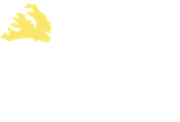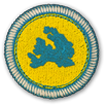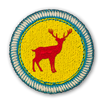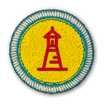Til hamingju is Icelandic for congratulations.
Now you have learned the A-Ö of Iceland and completed all of the regional classes. Hope you had some fun!



Iceland’s most famous highway, the Ring Road, has some competition in the Westfjords. The so-called Ring Road 2 weaves a jagged circuit around the region’s exquisite mountaintops, valleys and coastline, with detours to towns and natural attractions such as Dynjandi waterfall and the golden sands of Rauðasandur beach.
These roads offer some of Iceland’s most magnificent scenery, however some sections can be challenging, with stretches of bumpy gravel, steep inclines and tight bends. During the colder months roads can also be very slippery or simply closed, so be sure to check the conditions in advance to ensure a safe trip.


The Westfjords are Iceland’s most remote and least populous region, so it is perhaps unsurprising that it has bred some rather interesting local characters. The best known is Jón Sigurðsson, a leading figure of the 19th century independence movement, who now adorns Iceland’s 500 krónur bill.
Also, memorable, though for very different reasons, was Gísli from Uppsalir, a recluse who became well known in the 1980s after appearing in a television interview. More recently, a friendly sheep farmer known as Bettý has gained attention as the last remaining resident of Ingjaldssandur, where her family has lived for generations.
Roads to Ingjaldssandur are cut off throughout much of the winter, but Bettý finds enough to keep herself busy, knitting beautiful garments to pass the winter nights.


Surfing is slowly but surely gaining popularity in Iceland. The challenging conditions are certainly not for the casual surfer, but with dedication and a bit of homework, the frosty waters can be incredibly rewarding.
There are a number of surfing spots around the Westfjords, with the most waves in the colder months when the winds pick up. Note the ocean temperatures can drop to freezing, so it is essential to wear a 5–6 mm wetsuit, boots, gloves and hood to stave off frostbite.


In the Westfjords, it’s not so much about the destination, but the experiences you collect along the way. Every part of the journey is beautiful, so it makes little sense to rush between attractions – it’s enough to simply enjoy the ride and daydream as you go.
And while the best-known sites are certainly spectacular, sometimes the most memorable parts of a trip are the things you don’t plan: a spontaneous swim, a marvelous sunset, or a chat with a friendly local.


The Westfjords offer many delightful deviations from well-trodden paths. While no part of the region could ever be described as crowded, a detour up to Árneshreppur – the least populous municipality in Iceland – will bring you to absolute tranquility.
There you’ll find beautiful Djúpavík, a once-thriving village that was abandoned when herring stocks crashed in the 1940s. Today the hamlet has just two permanent residents, who now run the town’s only hotel. The old Djúpavík herring factory has been renovated and now hosts excellent art exhibitions and a small museum of local history.
From the village, you can then another detour north to Krossneslaug, a remote geothermal pool with glorious views of the mountains and waves.


The Westfjords are dotted with deserted farmhouses, haunting (and perhaps haunted) structures that have inspired many a photographer. They stand as monuments to the challenges of life in these remote fjords, raising questions of who might have lived there and what might have induced them to leave.
They are also a testament to the merciless winters, as some are so wind-battered that they appear as much a part of the landscape as the rocks and hills.


One of the Iceland’s most beloved musicians, Mugison, hails from the Westfjords. After spending much of his early career in the capital, he returned to his hometown Ísafjörður in 2004, where he released several successful albums and founded the hugely popular Aldrei Fór ég Suður (“I never went south”) music festival with his father.
In 2011, he released his first album in Icelandic, Haglél (“hail”), which went on to win album of the year at the Icelandic Music Awards. His music, which melds acoustic guitar with electronic influences, also makes the perfect soundtrack for a roadtrip around the fjords.


The Westfjords offer some of the world’s best opportunities for birdwatching, with puffins, guillemots, eiders, fulmars, Arctic terns and razorbills among the most common sightings. The most famous spot is Látrabjarg promontory, where innumerable seabirds flock to nest in the towering cliffs.
The puffins, with their sweet clownish faces, are remarkably fearless, so it is possible to see them up close. There are also marvellous birdwatching sites at Hornstrandir Nature Reserve, the village of Reykhólar, and islands Vígur and Grímsey.


The Strandir region has long been associated with sorcery and supernatural creatures. The Museum of Icelandic Sorcery and Witchcraft in Hólmavík explores this rich local folklore alongside fascinating facts about the area’s grim history of witch-hunting. The museum is not for the faint-hearted, and its most popular piece, the 17th century necropants, are positively ghoulish.
Curious types should stop for a chat with the museum’s curator, a friendly sorcerer with an impressive knowledge of all things magical.


Hornstrandir nature reserve is an area of arresting beauty, with secluded coves flanked by jagged emerald mountains piercing the sky. At its northernmost tip is Hornbjarg, a monumental bird cliff with a startling 534 m drop-off. Despite these natural wonders, the area receives relatively few visitors due to its isolation and lack of infrastructure.
There are no roads into the reserve, but it is possible to get there via ferry from Ísafjörður. Visitors should come well prepared and treat the delicate nature with the respect it commands.


Sailing is the lifeblood of the Westfjords, with every town in the region reliant on the fertile fishing grounds just off the coast. As such, the word innsigling – “sailing into a fjord” – has a positive connotation, as a fisherman’s return to land is always a welcome relief. It is possible to learn all about the region’s intriguing fishing history at the Ósvör Maritime Museum in Bolungarvík, one of Iceland’s oldest fishing outposts.
The museum is a reconstruction of a 19th-century fishing station, and its curator adds a touch of authenticity by greeting visitors in full fisherman’s get-up.


Inhale; exhale. The air is crystal clear. Out in the expanses of nature there’s barely a sound – just the calls of the birds and the rhythm of your footsteps. The quiet is calming, yet powerful. Meditative.
You could wander for miles without seeing a car, a house, or even another person. And there is no rush. Just mountains, waves, and space to breathe.


Jæja is probably the most versatile word in the Icelandic language, and unlike most others, it’s also easy to say. Try it: YIGH-yah. At its simplest, it can be translated as “well, then”, but with different intonations it can also be used to express just about anything: greetings, surprise, annoyance, excitement, confusion… the list goes on.
Most often though, it indicates that you’re about to do something and it’s time to get moving. However, in the relaxed atmosphere of the Westfjords, it might take a few jæjas before anyone takes the hint.


Westfjord weather is predictably unpredictable. Radiant sunshine can turn into a downpour in a matter of minutes, and temperatures can drop suddenly, especially in the mountains where conditions change with altitude. It is therefore essential to pack clothes for all types of weather, even in summer. Wool and fleece work best as inner layers, and sturdy outerwear will keep you comfy and dry.
Good boots are also a must if you intend on hiking; your sneakers aren’t going to cut it. Oh, and don’t forget your bathing suit, even in winter. Geothermal pools are warm enough for a dip all year round.


The Westfjords are less geothermally active than the rest of Iceland, so it seems counterintuitive that the region has more natural hot pools than just about anywhere else. This is because the water tends to be a comfortable temperature straight from the ground, ideal for a soak after a long day of hiking.
A particularly lovely spot is the Hellulaug hot spring in Vatnsfjörður, a rock pool located right by the shore, with views of the ocean and fjord. Most hot springs are always open and free of charge, and guests are kindly asked leave them just as they found them.


On the cusp of the Arctic Circle, the seasons are extreme. Summer brings perpetual daylight, while in the depths winter, the sun barely peaks above the horizon. In fact, in Ísafjörður, the mountains are so high that the town’s residents don’t see the sun at all between late November and the end of January, when it finally skulks back over the mountaintops.
While this may sound like a gloomy prospect, the locals have learned to embrace the darkness, welcoming it every year with the Veturnætur (“Winter Nights”) festival. Events typically include theatre, live music, and heapings of delicious winter food – a perfectly cosy celebration to brighten the winter nights.


The Westfjords’ months of ebony skies bring excellent opportunities for scoping out northern lights. While these dancing green ribbons are notoriously fickle, the long days of darkness will up the odds of catching a glimpse.
It is also easy to escape from light pollution, with pitch-black darkness just a short drive from towns and villages. Dress well, pack your thermos, and keep your eyes to the heavens.


While the people of the Westfjords are defined by their strength and resilience, they are also wonderfully warm and down to earth. The region has a strong sense of community and shared identity, shaped by its remoteness from the rest of the country.
The locals are also understandably proud of their beautiful fjords and are therefore eager to share them with anyone who makes the effort to visit. In the Westfjords, everyone is welcome.


Hesteyri was a modest fishing village until 1952, when the last remaining residents abandoned the lonely hamlet. A scattering of buildings still stands there today. This eerie setting became the inspiration for Ég Man Þig (I Remember You), a ghost story by popular Icelandic author Yrsa Sigurðardóttir, which also was recently adapted into a highly successful film of the same name.
The story is about three friends who come to the village to renovate one of the old houses. Little do they know, they’re not as alone as they think.


The mountains and valleys of the Westfjords are sprinkled with wild herbs and flowers that are not just pretty, but also surprisingly potent. For centuries locals have used them for their medicinal qualities, passing on their knowledge from generation to generation. One such herbalist is Alla Þorsteinsdóttir, a Tálknafjörður resident who began making her own salves as a hobby before developing it into a business, which she named Villimey.
Today she sells soothing salves and beauty products made from handpicked ingredients such as wild thyme and angelica.


Rauðasandur (“red sand”) is an anomaly among Icelandic beaches, which are typically dominated by jet-black volcanic sands. As its name suggests, this beach is in fact red, or rather a mix of deep ochre and vibrant golden yellows that seem to shift with the light. These startling hues are derived from pulverised scallop shells, which have accumulated at the shores over thousands of years.
Rauðasandur covers a vast 10 km expanse and is home to a community of seals, which can often be seen lolling by shore. This beautiful coastline is a highlight of any trip to the Westfjords.


On a little farm in the secluded Selárdalur valley lived Samúel Jónsson, a farmer-turned-sculptor best known as “the artist with the heart of child” – a nod towards his gentle naivist style. It wasn’t until Samúel retired that he finally had time to channel his creativity, and the untrained artist set about sculpting a multitude of concrete animal statues, along with a chapel and a museum to display his many other creations.
Sadly, when Samúel passed away in 1969, his creations fell into neglect. They have since been lovingly restored, and visitors are welcome to come and see this strange yet wonderful place.


The Arctic fox is Iceland’s only native mammal, having been stranded here at the end of the last Ice Age. They are also one of Iceland’s cutest creatures, with a chubby, fluffy form that looks eternally puppyish. Although they can be found in many parts of Iceland, they are most plentiful in the Westfjords, particularly in the Hornstrandir nature reserve, where they are protected from hunting.
Visitors to the Westfjords can learn all about these enchanting creatures in the Arctic Fox Centre in Súðavík, just a short drive from Ísafjörður.


One of the more surprising facts about the Westfjords is that you won’t find a single traffic light in the entire region. Actually, there was once one in Bolungarvík, but it was removed some years ago.
City folks may find this difficult to imagine, but when you consider that the Westfjords has a population density of 0.3 people per square kilometre, it’s perhaps not so surprising after all.


The Westfjords offers countless opportunities for outdoor adventures. The hiking is of course incredible – that’s a given – but adventurous types should also try abseiling, climbing, paragliding, mountain biking, kayaking, sea angling, or even scuba diving in the clean ocean water.
Alternatively, those who prefer a more relaxed pace will appreciate picturesque golf courses, whale watching tours, and the tranquil geothermal pools. And of course in winter, you’ll find some of Iceland’s best ski slopes in Ísafjörður, which has both downhill and cross-country ski areas.


The Westfjords are one of Iceland’s most spectacular and under-visited regions. Poking out from the northwestern corner of the country, its relative isolation has guarded its many treasures in pristine condition.
Highlights of this beautiful landscape include the breathtaking Hornstrandir nature reserve in the far north, the haunted and historical Hólmavík in the east, the golden shores of Rauðasandur and dizzying Látrabjarg bird cliffs in the southwest, and the exquisite Dynjandi waterfall towards the centre. Best of all, despite the Westfjords’ reputation as a far-flung paradise, a flight from the capital will have you there in as little as 40 minutes.


No trip to Ísafjörður could be considered complete without a visit to Gamla bakaríið (the Old Bakery) in the town centre. This traditional bake shop is more than a century old and specialises in classic Icelandic bread, cakes and pastries. Popular treats include kleinur, a sort of mildly sweet diamond-shaped donut, and hjónabandssæla (“wedded bliss”), which is a happy marriage of buttery oat crust and rhubarb jam.
Visitors are encouraged to enjoy these sweet treats the way the locals do – wholeheartedly, and without a morsel of guilt.


It seems that just about every community in the Westfjords has its own quirky little museum, and the tiny village of Bildudalur is no exception. The Icelandic Sea Monster Museum explores the region’s oceanic folklore, which includes tales of creatures from the deep such as the fjörulalli (shore laddie), a barnacle covered seal-like beast; and hafmaður, a loathsome merman with blade-like fangs.
Visitors to the museum will see these monsters brought to life in a lively mix of models, videos, and a multimedia monster table.


The Westfjords were built on back of the fishing industry, and although the economy has gradually begun to diversify, the region is still heavily dependent on sea for its livelihood. The most common ocean catches are haddock and cod, and wolffish and shrimp as are also important.
Fish farming has also taken off, with towns such as Tálknafjörður and the neighbouring Patreksfjörður producing thousands of tons of ocean salmon every year. You can sample fresh local seafood at a number of excellent restaurants around the region.


You may be puzzled to learn that the Westfjords are home to a vast, sprawling “jungle”. Don’t be surprised if you don’t see it though – at high tide, this forest of seaweed lies below the surface of the waves, where it provides an important habitat for the region’s ocean creatures.
The people of Reykhólar have made good use of this organic resource, setting up a small factory that processes kelp for use in food supplements and, more recently, gourmet food and beauty products. And in the village of Þingeyri, local artist Kristín Helgadóttir has found a particularly inventive use for seaweed, cleaning, drying and polishing it to create her line of “beach pearl” jewelry.


Dynjandi is the largest waterfall in the Westfjords, an imposing 90 m in height and 60 m across at its widest point. Many also consider it to be the most beautiful waterfall in all of Iceland. A broad veil of water cascades over an intricately layered mountainside, creating a kind of tiered wedding cake effect.
While this upper section tends to hog the limelight, Dynjandi also flows into six other impressive waterfalls just a little downstream. One of these is formed in such a way that it is possible to walk behind it, and return at least relatively dry.


Heading into the Westfjords, visitors will notice a rather intriguing change in scenery. Mountains appear more rugged, pitted and gnarled, clearly different from the more streamlined slopes found elsewhere in Iceland.
The explanation for the Westfjords’ unique scenery is quite simple: at 16 million years old, the region is considerably older than the rest of the country. This is also why the Westfjords are less volcanically active than the rest of Iceland – they’ve had some time to cool off.
Now it is time to learn more about the 7 regions of Iceland.
Take the quiz to test out your skills and be one step closer to know all about the 7 regions of Iceland!


You just aced this class so you are now one step closer to knowing the 7 regions of Iceland inside out.
Share on Facebook


Now you have learned the A-Ö of Iceland and completed all of the regional classes. Hope you had some fun!
Finish all the classes to have the chance to win a trip to Iceland


There is something magical about the Westfjords, the region that could arguably be labelled "Iceland's best kept secret". Isolation has preserved the region in a relatively unspoiled wilderness, making it a must-see for any serious explorers.


It's all about beautiful contrasts in the North, a land where long valleys and peninsulas are interspersed with big mountains, lava fields and smooth hills carved out by powerful rivers. Go big or go home!


If drifting through picturesque fjords from one warm town to the next is your cup of tea, head to the East. It is home to the country's largest forest, lush farmlands and even the mysterious lake monster in Lagarfljot.


What's so cool about Reykjanes? Not only is it where most visitors set foot in, a geothermal wonder and the home of the spectacular Blue Lagoon, but also a place where lighthouses outnumber villages.


If the regions were pop songs, the South would probably be the chart-topping hit, since it is renowned for its beauty and the home of some o f the country's most visited tourist attractions.





